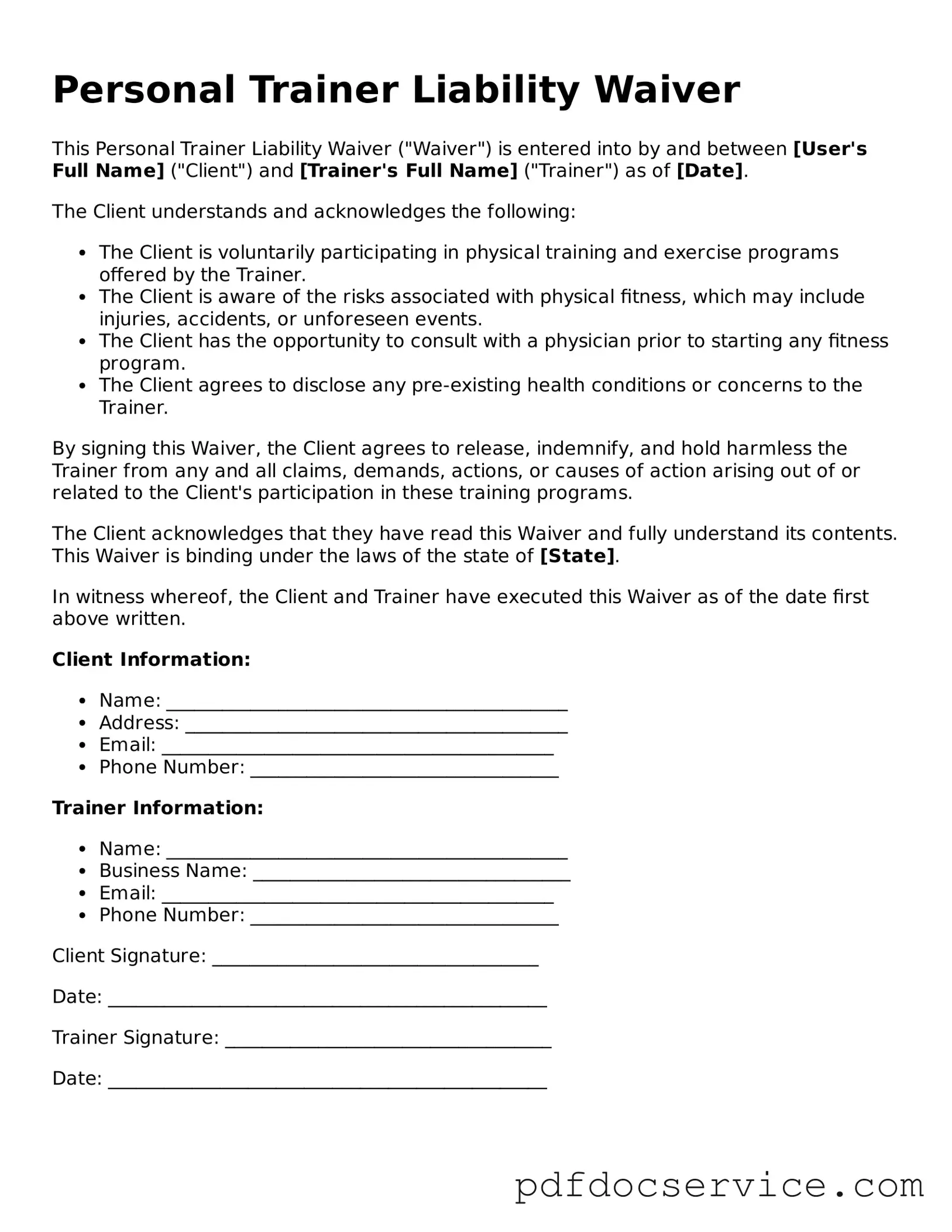A Personal Trainer Liability Waiver form is a legal document that clients sign before beginning personal training sessions. This form outlines the risks associated with physical training and releases the trainer and facility from liability for injuries that may occur during workouts. By signing, clients acknowledge these risks and agree to participate voluntarily.
Why is it important to sign a waiver?
Signing a waiver is crucial for both the client and the personal trainer. It helps protect the trainer and the facility from legal claims related to injuries sustained during training. For clients, it serves as a reminder of the inherent risks involved in physical activity. Understanding these risks can promote safer practices during workouts.
What should I do if I have questions about the waiver?
If you have questions about the waiver, it is important to address them before signing. Speak directly with your personal trainer or the facility's management. They can provide clarity on specific terms and conditions, ensuring you fully understand what you are agreeing to.
Can I still sue if I sign the waiver?
Signing the waiver does not completely eliminate your right to file a lawsuit. However, it may limit your ability to succeed in a claim against the trainer or facility. Courts often uphold waivers, but exceptions may apply, particularly in cases of gross negligence or intentional misconduct. It is advisable to consult a legal professional for personalized guidance.
Are there any age restrictions for signing the waiver?
Typically, individuals under the age of 18 cannot sign the waiver themselves. A parent or legal guardian must sign on their behalf. This ensures that minors are protected and that their guardians are aware of the associated risks.
What if I have a pre-existing medical condition?
Clients with pre-existing medical conditions should disclose this information to their personal trainer before signing the waiver. It is essential for trainers to be aware of any health concerns to tailor workouts appropriately and ensure client safety. Failure to disclose such conditions may impact liability in case of an injury.
How often do I need to sign a new waiver?
Generally, clients are required to sign a new waiver when they begin a new training program, change trainers, or if the facility updates its policies. It is advisable to review the waiver periodically to ensure that you understand any changes that may have been made.
